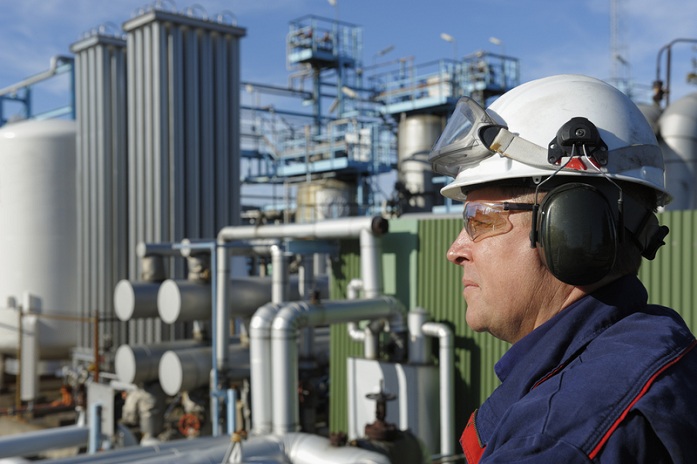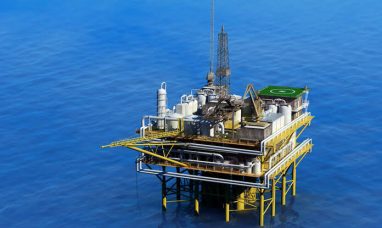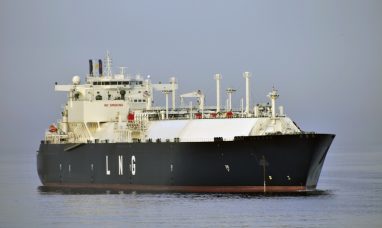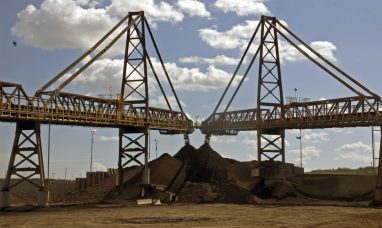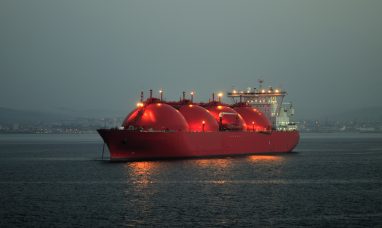CALGARY, Alberta, July 27, 2022 (GLOBE NEWSWIRE) — Athabasca Oil Corporation (TSX: ATH) (“Athabasca” or the “Company”) is pleased to report its 2022 second quarter results with continued significant Free Cash Flow and material deleveraging. Athabasca is uniquely positioned as a low leveraged company generating significant Free Cash Flow through its low-decline, oil weighted asset base.
Q2 Corporate Highlights
Production:
33,247 boe/d (92% Liquids) consisting of 26,768 bbl/d in Thermal Oil and 6,479 boe/d (58% Liquids) in Light Oil. The Company completed a successful turnaround at Leismer in May and is increasing its annual production guidance to 34,000 – 35,000 boe/d (from prior guidance of 33,000 – 34,000 boe/d) based on strong underlying asset performance.
Capital Expenditures:
$51 million focused on sustaining operations in Thermal Oil.
Record Netbacks:
$64.77/boe in Light Oil, $56.78/bbl at Leismer and $53.48/bbl at Hangingstone, supported by strong commodity prices.
Record Cash Flow:
Record quarterly Adjusted Funds Flow
1
of $85 million and Free Cash Flow of $34 million. The Company is now forecasting Adjusted Funds Flow
2
of ~$350 million and Free Cash Flow
2
of ~$220 million. Continued cash flow expansion is expected through 2023 as described below.
Significant Deleveraging:
Redeemed $167 million (US$131 million) in Term Debt year to date, achieving 75% of US$175 million debt reduction target which is anticipated to be reached in H1 2023. The Company has low Net Debt of ~$100 million and expects to be in a Net Cash position before year end.
Operational Highlights
Leismer Development:
Current production (22,400 bbl/d in June) is underpinned by the strong ramp up of Pad L8 (5 well pairs) which is producing ~5,500 bbl/d. Strong new well performance, combined with effective use of non-condensable gas co-injection on mature pads, is resulting in a current steam oil ratio of 2.8x (June). The Company recently drilled two infill wells at Pad L6 and drilling is underway for another five additional well pairs at Pad L8, with new production expected in 2023. Athabasca plans to grow Leismer’s production up to the facility’s oil handling capacity by maintaining its current capital cadence. The Company is achieving Profit-to-Investment Ratios (NPV/Investment) of ~10x through this development plan.
Hangingstone:
Production of ~9,400 bbl/d (June). Non condensable gas co-injection is resulting in reduced energy intensity with the steam oil ratio of 3.8x year to date.
Light Oil Duvernay and Montney:
Three Duvernay wells at Two Creeks completed in Q1 continue to outperform expectations with IP90s averaging ~610 boe/d (96% Liquids) for each well. The Company has a flexible development portfolio of ~850 gross de-risked Montney and Duvernay wells along with strategic ownership and operatorship of liquids and gas infrastructure.
Footnote: Refer to the “Reader Advisory” section within this news release for additional information on Non‐GAAP Financial Measures (e.g. Operating Income/Netbacks, Adjusted Funds Flow, Free Cash Flow, Net Debt/Cash) and production disclosure.
1
Cash Flow from Operating Activities of $69 million.
2
Pricing Assumptions: realized prices for H1 2022 and flat pricing of US$95 WTI, US$20 Western Canadian Select “WCS” heavy differential, C$5.50 AECO, and $0.775 C$/US$ FX for the balance of 2022.
Strategic Update and Corporate Outlook
Low Decline, Long Life Asset Base.
The Company’s increased production guidance of 34,000 – 35,000 boe/d and a modest 2022 capital program is indicative of long-term sustaining capital that benefits from a low decline, large resource asset base. The Company has a deep asset inventory with 1,230 mmbbl 2P Reserves in Thermal Oil and ~850 gross wells of short cycle-time, high returning Light Oil Assets. The asset portfolio is demonstrating its ability to generate significant Free Cash Flow and will provide tremendous optionality into the future.
Managing for Free Cash Flow.
For 2022, Athabasca is increasing its financial forecasts based on strong operational performance and updated pricing assumptions. Adjusted Funds Flow
1
is forecasted to be ~$350 million including Free Cash Flow
1
of ~$220 million. The Company further expects to generate ~$950 million in Free Cash Flow during the three year timeframe of 2022-24 (inclusive of 2022 guidance and flat pricing of US$85 WTI and US$12.50 WCS differentials thereafter). Every $5/bbl WTI change impacts Free Cash Flow by ~$45 million annually (unhedged). The Company’s strong margins and Free Cash Flow profile is supported by $3.1 billion in tax pools and a pre-payout Crown royalty structure for its Thermal Oil assets.
Executing Significant Deleveraging with Clear Targets:
The Company is planning to utilize 100% of near‐term Free Cash Flow to reduce its Term Debt and is anticipating being in a Net Cash position before year end 2022. Year to date the Company has redeemed a total of $167 million (US$131 million) through open market purchases, equity redemptions through warrant proceeds and the Free Cash Flow payment feature within the indenture. This achieves 75% of our US$175 million debt reduction target which is anticipated to be reached in H1 2023.
Excellent Exposure to Commodity Price Upside:
Athabasca has retained excellent exposure to upside in commodity prices with 50% of its 2022 sales volumes unhedged, 20% of its sales hedged through collars with upside to US$115 WTI, and 30% of its sales hedged through fixed swaps at an implied US$74 WTI (assuming a US$20 WCS differential). The Company has minimal hedging in 2023 and expects lower future hedge levels relative to 2022 to protect its base capital program as debt targets are achieved.
Thermal Oil Differentiation:
Athabasca’s Thermal assets operate in a pre-payout Crown royalty structure, with royalty rates between 5 – 9%, and is anticipated to last beyond 2028 (US$85 WTI, US$12.50 WCS differential flat pricing). This results in maximum cash flow at current commodity prices and creates a significant advantage over the majority of Industry oil sands projects. The Company’s low decline, long reserve life Thermal Oil assets are forecasted to generate ~$500 million in Operating Income
1
in 2022. At current commodity prices, these assets compete exceptionally well on all cash flow metrics against top plays in North America with capital investments generating double-digit Recycle and Profit-to-Investment Ratios.
Unlocking Shareholder Value:
The transition of enterprise value to equity holders is materializing and is expected to unlock significant shareholder value. Athabasca is committed to further enhancing shareholder returns by utilizing Free Cash Flow and cash balances for share buy-backs or dividends once its debt target is achieved. The Company sees tremendous intrinsic value not reflected in the current share price. Guidance on shareholder returns and the corporate capital allocation framework will be provided in the fourth quarter.
1
Pricing Assumptions: realized prices for H1 2022 and flat pricing of US$95 WTI, US$20 Western Canadian Select “WCS” heavy differential, C$5.50 AECO, and $0.775 C$/US$ FX for the balance of 2022.
Financial and Operational Highlights
Three months ended
|
Six months ended
|
|||||||||||||||
($ Thousands, unless otherwise noted) |
2022 |
2021 |
2022 |
2021 |
||||||||||||
| CONSOLIDATED | ||||||||||||||||
| Petroleum and natural gas production (boe/d) ( 1) |
33,247 | 34,659 | 33,958 | 34,531 | ||||||||||||
| Petroleum, natural gas and midstream sales | $ | 435,678 | $ | 232,111 | $ | 825,102 | $ | 443,767 | ||||||||
| Operating Income (Loss) ( 1) |
$ | 169,255 | $ | 93,196 | $ | 319,895 | $ | 159,124 | ||||||||
| Operating Income (Loss) Net of Realized Hedging ( 1)(2) |
$ | 103,549 | $ | 75,372 | $ | 206,543 | $ | 120,187 | ||||||||
| Operating Netback ($/boe) ( 1) |
$ | 57.51 | $ | 31.09 | $ | 52.26 | $ | 26.00 | ||||||||
| Operating Netback Net of Realized Hedging ($/boe) ( 1)(2) |
$ | 35.18 | $ | 25.14 | $ | 33.74 | $ | 19.64 | ||||||||
| Capital expenditures | $ | 51,191 | $ | 22,628 | $ | 82,120 | $ | 58,182 | ||||||||
| Free Cash Flow ( 1) |
$ | 33,608 | $ | 27,600 | $ | 77,440 | $ | 11,007 | ||||||||
| THERMAL OIL DIVISION | ||||||||||||||||
| Bitumen production (bbl/d) | 26,768 | 26,433 | 27,335 | 26,193 | ||||||||||||
| Petroleum, natural gas and midstream sales | $ | 399,793 | $ | 207,503 | $ | 760,074 | $ | 394,213 | ||||||||
| Operating Income (Loss) ( 1) |
$ | 131,067 | $ | 67,568 | $ | 251,904 | $ | 109,736 | ||||||||
| Operating Netback ($/bbl) ( 1) |
$ | 55.68 | $ | 30.05 | $ | 51.17 | $ | 23.81 | ||||||||
| Capital expenditures | $ | 43,093 | $ | 21,388 | $ | 64,275 | $ | 54,402 | ||||||||
| LIGHT OIL DIVISION | ||||||||||||||||
| Petroleum and natural gas production (boe/d) ( 1) |
6,479 | 8,226 | 6,623 | 8,338 | ||||||||||||
| Percentage Liquids (%) ( 1) |
58 | % | 57 | % | 57 | % | 57 | % | ||||||||
| Petroleum, natural gas and midstream sales | $ | 53,825 | $ | 36,365 | $ | 98,933 | $ | 70,937 | ||||||||
| Operating Income (Loss) ( 1) |
$ | 38,188 | $ | 25,628 | $ | 67,991 | $ | 49,388 | ||||||||
| Operating Netback ($/boe) ( 1) |
$ | 64.77 | $ | 34.23 | $ | 56.72 | $ | 32.72 | ||||||||
| Capital expenditures | $ | 1,221 | $ | 544 | $ | 9,208 | $ | 1,512 | ||||||||
| CASH FLOW AND FUNDS FLOW | ||||||||||||||||
| Cash flow from operating activities | $ | 68,535 | $ | 36,183 | $ | 128,397 | $ | 37,321 | ||||||||
| per share – basic | $ | 0.12 | $ | 0.07 | $ | 0.23 | $ | 0.07 | ||||||||
| Adjusted Funds Flow ( 1) |
$ | 84,799 | $ | 50,228 | $ | 159,560 | $ | 69,189 | ||||||||
| per share – basic | $ | 0.15 | $ | 0.09 | $ | 0.29 | $ | 0.13 | ||||||||
| NET INCOME (LOSS) AND COMPREHENSIVE INCOME (LOSS) | ||||||||||||||||
| Net income (loss) and comprehensive income (loss) | $ | 47,121 | $ | (13,944 | ) | $ | (72,480 | ) | $ | (31,416 | ) | |||||
| per share – basic | $ | 0.08 | $ | (0.03 | ) | $ | (0.13 | ) | $ | (0.06 | ) | |||||
| per share – diluted | $ | 0.08 | $ | (0.03 | ) | $ | (0.13 | ) | $ | (0.06 | ) | |||||
| COMMON SHARES OUTSTANDING | ||||||||||||||||
| Weighted average shares outstanding – basic | 568,728,441 | 530,675,391 | 550,013,742 | 530,675,391 | ||||||||||||
| Weighted average shares outstanding – diluted | 585,934,027 | 530,675,391 | 550,013,742 | 530,675,391 | ||||||||||||
June 30, |
December 31, |
|||||
As at ($ Thousands) |
2022 |
2021 |
||||
| LIQUIDITY AND BALANCE SHEET | ||||||
| Cash and cash equivalents | $ | 154,172 | $ | 223,056 | ||
| Available credit facilities ( 3) |
$ | 77,838 | $ | 77,844 | ||
| Face value of term debt ( 4) |
$ | 291,881 | $ | 443,730 | ||
(1) Refer to the “Reader Advisory” section within this news release for additional information on Non-GAAP Financial Measures and production disclosure.
(2) Includes realized commodity risk management loss of $65.7 million and $113.4 million for the three and six months ended June 30, 2022 (three and six months ended June 30, 2021 – loss of $17.8 million and $38.9 million).
(3) Includes available credit under Athabasca’s Credit Facility and Unsecured Letter of Credit Facility.
(4) The face value of the term debt at June 30, 2022 was US$227 million (December 31, 2021 – US$350 million) translated into Canadian dollars at the June 30, 2022 exchange rate of US$1.00 =C$1.2886 (December 31, 2021 – C$1.2678).
Operations Update
Thermal Oil
Bitumen production for Q2 2022 averaged 26,768 bbl/d. The Thermal Oil division generated Operating Income of $131 million. Q2 2022 Operating Netbacks for Leismer and Hangingstone were a record $56.78/bbl and $53.48/bbl, respectively. Capital expenditures were $43 million.
For 2022, Athabasca has fully hedged its Thermal Oil gas input costs through its Light Oil gas production with the balance financially hedged at ~C$4/mcf AECO. The Company has also commenced hedging its gas input costs for 2023 locking in 10 mmcf/d at ~C$5.50/mcf.
Leismer
Bitumen production for the second quarter averaged 17,436 bbl/d inclusive of downtime related to the planned facility turnaround in May which was completed on time and within budget. With a peak workforce of ~550 people completing ~92,000 hours of work, Athabasca is pleased to report no lost time incidents and no reportable spills. The safety of our people is a top priority and our results showcase the deeply embedded safety culture within the organization.
At Pad L8, all five sustaining well pairs have been converted to production. The initial production ramp-up has exceeded management expectations and the pad is producing ~5,500 bbl/d. In June, the Company drilled two additional infill wells at Pad L6 and drilling is underway on five additional well pairs at Pad L8. These wells are expected to support production in 2023 and the sustaining pads have unparalleled Profit-to-Investment Ratios (NPV/Investment) of ~10x and double-digit Recycle Ratios (US$85 WTI, US$12.50 WCS differentials).
Leismer’s current production is ~22,400 bbl/d (June) with ~50% of volumes attributed to newer vintage production (Pad L7 and L8). Strong new well performance, combined with effective use of non-condensable gas co-injection on mature pads, is resulting in a current steam oil ratio of 2.8x (June). The percentage of newer vintage production is expected to grow with the current development plans and underpins the assets low decline rate. Athabasca plans to grow Leismer’s production up to the facility’s oil handling capacity by maintaining its current capital cadence of approximately one sustaining pad per year. Leismer has regulatory approval for expansion to 40,000 bbl/d which would require debottlenecking the facility and drilling incremental well pairs.
Leismer has a significant Unrecovered Capital Balance of $1.6 billion which ensures a low Crown royalty framework as the asset is forecasted to remain pre-payout until 2028 (US$85 WTI, US$12.50 WCS differential).
Hangingstone
Bitumen production for the second quarter averaged 9,332 bbl/d. Reservoir performance continues to be supported by strong facility runtime and non-condensable gas co-injection which is aiding in pressure support and reduced energy usage. Hangingstone’s steam oil ratio has averaged 3.8x year to date.
In 2022, Hangingstone will have no capital allocation other than routine pump replacements. Strong operational performance, cost enhancements and improved commodity prices are driving competitive margins. The Hangingstone asset is expected to generate ~$130 million of Operating Income
1
in 2022.
1
Pricing Assumptions: realized prices for H1 2022 and flat pricing of US$95 WTI, US$20 Western Canadian Select “WCS” heavy differential, C$5.50 AECO, and $0.775 C$/US$ FX for the balance of 2022.
Light Oil
Production averaged 6,479 boe/d (58% Liquids) for Q2 2022. The Light Oil division generated Operating Income of $38 million with a record Operating Netback of $64.77/boe. Capital expenditures were $1.2 million and included two facility turnarounds at Kaybob West and Kaybob East.
Placid Montney
At Greater Placid, production averaged 3,275 boe/d (42% Liquids) during the second quarter with an Operating Netback of $55.40/boe. Placid is positioned for flexible future development with an inventory of ~150 gross drilling locations and minimal near-term land retention requirements.
Kaybob Duvernay
At Greater Kaybob, production averaged 3,204 boe/d (74% Liquids) during the second quarter with an Operating Netback of $64.77/boe.
Three Duvernay wells in the oil window at Two Creeks were completed early in the year with IP90’s for the wells between 480 – 770 boe/d (averaging 610 boe/d, 96% Liquids). Athabasca’s prior 12 wells at Kaybob East and Two Creeks have average IP365s of ~550 boe/d (83% Liquids). Strong well results coupled with a large well inventory (~700 gross drilling locations) and flexible development timing is indicative of significant value to Athabasca.
The Kaybob area is supported by a strong Joint Development Agreement, established operated infrastructure and minimal near-term land retention requirements. The Company remains encouraged by competitor activity and recent new entrants into the play. Minimal capital activity is planned for the remainder of 2022 with operations focused on facility maintenance and readiness for future optionality.
About Athabasca Oil Corporation
Athabasca Oil Corporation is a Canadian energy company with a focused strategy on the development of thermal and light oil assets. Situated in Alberta’s Western Canadian Sedimentary Basin, the Company has amassed a significant land base of extensive, high quality resources. Athabasca’s common shares trade on the TSX under the symbol “ATH”. For more information, visit
www.atha.com
.
| For more information, please contact: | |
| Matthew Taylor | Robert Broen |
| Chief Financial Officer | President and CEO |
| 1-403-817-9104 | 1-403-817-9190 |
[email protected] |
[email protected] |
Reader Advisory:
This News Release contains forward-looking information that involves various risks, uncertainties and other factors. All information other than statements of historical fact is forward-looking information. The use of any of the words “anticipate”, “plan”, “continue”, “estimate”, “expect”, “may”, “will”, “target”, “forecast”, “goal”, “aspiration”, “commit” and similar expressions are intended to identify forward-looking information. The forward-looking information is not historical fact, but rather is based on the Company’s current plans, objectives, goals, strategies, estimates, assumptions and projections about the Company’s industry, business and future operating and financial results. This information involves known and unknown risks, uncertainties and other factors that may cause actual results or events to differ materially from those anticipated in such forward-looking information. No assurance can be given that these expectations will prove to be correct and such forward-looking information included in this News Release should not be unduly relied upon. This information speaks only as of the date of this News Release. In particular, this News Release contains forward-looking information pertaining to, but not limited to, the following: our strategic plans; future debt levels and repayment plans; the allocation of future capital; timing for shareholder returns including share buybacks and dividends; our drilling plans in Leismer; Leismer ramp-up to expected production rates; timing of Leismer’s pre-payout royalty status; expected operating results at Hangingstone; Net Debt/Cash positions; Adjusted Funds Flow and Free Cash Flow in 2022; the impact of lower future hedge levels; type well economic metrics; forecasted daily production and the composition of production; and other matters.
In addition, information and statements in this News Release relating to “Reserves” and “Resources” are deemed to be forward-looking information, as they involve the implied assessment, based on certain estimates and assumptions, that the reserves and resources described exist in the quantities predicted or estimated, and that the reserves and resources described can be profitably produced in the future. With respect to forward-looking information contained in this News Release, assumptions have been made regarding, among other things: commodity prices; the regulatory framework governing royalties, taxes and environmental matters in the jurisdictions in which the Company conducts and will conduct business and the effects that such regulatory framework will have on the Company, including on the Company’s financial condition and results of operations; the Company’s financial and operational flexibility; the Company’s financial sustainability; Athabasca’s cash flow break-even commodity price; the Company’s ability to obtain qualified staff and equipment in a timely and cost-efficient manner; the applicability of technologies for the recovery and production of the Company’s reserves and resources; future capital expenditures to be made by the Company; future sources of funding for the Company’s capital programs; the Company’s future debt levels; future production levels; the Company’s ability to obtain financing and/or enter into joint venture arrangements, on acceptable terms; operating costs; compliance of counterparties with the terms of contractual arrangements; impact of increasing competition globally; collection risk of outstanding accounts receivable from third parties; geological and engineering estimates in respect of the Company’s reserves and resources; recoverability of reserves and resources; the geography of the areas in which the Company is conducting exploration and development activities and the quality of its assets. Certain other assumptions related to the Company’s Reserves and Resources are contained in the report of McDaniel & Associates Consultants Ltd. (“McDaniel”) evaluating Athabasca’s Proved Reserves, Probable Reserves and Contingent Resources as at December 31, 2021 (which is respectively referred to herein as the “McDaniel Report”).
Actual results could differ materially from those anticipated in this forward-looking information as a result of the risk factors set forth in the Company’s Annual Information Form (“AIF”) dated March 2, 2022 available on SEDAR at www.sedar.com, including, but not limited to: weakness in the oil and gas industry; exploration, development and production risks; prices, markets and marketing; market conditions; climate change and carbon pricing risk; statutes and regulations regarding the environment; regulatory environment and changes in applicable law; gathering and processing facilities, pipeline systems and rail; reputation and public perception of the oil and gas sector; environment, social and governance goals; political uncertainty; continued impact of the COVID-19 pandemic; state of capital markets; ability to finance capital requirements; access to capital and insurance; abandonment and reclamation costs; changing demand for oil and natural gas products; anticipated benefits of acquisitions and dispositions; royalty regimes; foreign exchange rates and interest rates; reserves; hedging; operational dependence; operating costs; project risks; supply chain disruption; financial assurances; diluent supply; third party credit risk; indigenous claims; reliance on key personnel and operators; income tax; cybersecurity; advanced technologies; hydraulic fracturing; liability management; seasonality and weather conditions; unexpected events; internal controls; limitations of insurance; litigation; natural gas overlying bitumen resources; competition; chain of title and expiration of licenses and leases; breaches of confidentiality; new industry related activities or new geographical areas; and risks related to our debt and securities.
Also included in this News Release are estimates of Athabasca’s 2022 Outlook which are based on the various assumptions as to production levels, commodity prices, currency exchange rates and other assumptions disclosed in this News Release. To the extent any such estimate constitutes a financial outlook, it was approved by management and the Board of Directors of Athabasca, and is included to provide readers with an understanding of the Company’s outlook. Management does not have firm commitments for all of the costs, expenditures, prices or other financial assumptions used to prepare the financial outlook or assurance that such operating results will be achieved and, accordingly, the complete financial effects of all of those costs, expenditures, prices and operating results are not objectively determinable. The actual results of operations of the Company and the resulting financial results may vary from the amounts set forth herein, and such variations may be material. The financial outlook contained in this New Release was made as of the date of this News release and the Company disclaims any intention or obligations to update or revise such financial outlook, whether as a result of new information, future events or otherwise, unless required pursuant to applicable law.
Oil and Gas Information
“BOEs” may be misleading, particularly if used in isolation. A BOE conversion ratio of six thousand cubic feet of natural gas to one barrel of oil equivalent (6 Mcf: 1 bbl) is based on an energy equivalency conversion method primarily applicable at the burner tip and does not represent a value equivalency at the wellhead. As the value ratio between natural gas and crude oil based on the current prices of natural gas and crude oil is significantly different from the energy equivalency of 6:1, utilizing a conversion on a 6:1 basis may be misleading as an indication of value.
Initial Production Rates
Test Results and Initial Production Rates: The well test results and initial production rates provided in this presentation should be considered to be preliminary, except as otherwise indicated. Test results and initial production rates disclosed herein may not necessarily be indicative of long-term performance or of ultimate recovery.
Reserves Information
The McDaniel Report was prepared using the assumptions and methodology guidelines outlined in the COGE Handbook and in accordance with National Instrument 51-101 Standards of Disclosure for Oil and Gas Activities, effective December 31, 2021. There are numerous uncertainties inherent in estimating quantities of bitumen, light crude oil and medium crude oil, tight oil, conventional natural gas, shale gas and natural gas liquids reserves and the future cash flows attributed to such reserves. The reserve and associated cash flow information set forth above are estimates only. In general, estimates of economically recoverable reserves and the future net cash flows therefrom are based upon a number of variable factors and assumptions, such as historical production from the properties, production rates, ultimate reserve recovery, timing and amount of capital expenditures, marketability of oil and natural gas, royalty rates, the assumed effects of regulation by governmental agencies and future operating costs, all of which may vary materially. For those reasons, estimates of the economically recoverable reserves attributable to any particular group of properties, classification of such reserves based on risk of recovery and estimates of future net revenues associated with reserves prepared by different engineers, or by the same engineers at different times, may vary. The Company’s actual production, revenues, taxes and development and operating expenditures with respect to its reserves will vary from estimates thereof and such variations could be material. Reserves figures described herein have been rounded to the nearest MMbbl or MMboe. For additional information regarding the consolidated reserves and information concerning the resources of the Company as evaluated by McDaniel in the McDaniel Report, please refer to the Company’s AIF.
Reserve Values (i.e. Net Asset Value) is calculated using the estimated net present value of all future net revenue from our reserves, before income taxes discounted at 10%, as estimated by McDaniel effective December 31, 2021 and based on average pricing of McDaniel, Sproule and GLJ as of January 1, 2022.
The 700 gross Duvernay drilling locations referenced include: 7 proved undeveloped locations and 78 probable undeveloped locations for a total of 85 booked locations with the balance being unbooked locations. The 150 gross Montney drilling locations referenced include: 39 proved undeveloped locations and 59 probable undeveloped locations for a total of 98 booked locations with the balance being unbooked locations. Proved undeveloped locations and probable undeveloped locations are booked and derived from the Company’s most recent independent reserves evaluation as prepared by McDaniel as of December 31, 2021 and account for drilling locations that have associated proved and/or probable reserves, as applicable. Unbooked locations are internal management estimates. Unbooked locations do not have attributed reserves or resources (including contingent or prospective). Unbooked locations have been identified by management as an estimation of Athabasca’s multi-year drilling activities expected to occur over the next two decades based on evaluation of applicable geologic, seismic, engineering, production and reserves information. There is no certainty that the Company will drill all unbooked drilling locations and if drilled there is no certainty that such locations will result in additional oil and gas reserves, resources or production. The drilling locations on which the Company will actually drill wells, including the number and timing thereof is ultimately dependent upon the availability of funding, commodity prices, provincial fiscal and royalty policies, costs, actual drilling results, additional reservoir information that is obtained and other factors.
Non-GAAP and Other Financial Measures, and Production Disclosure
The “Adjusted Funds Flow”, “Adjusted Funds Flow per Share”, “Free Cash Flow”, “Light Oil Operating Income”, “Light Oil Operating Netback”, “Thermal Oil Operating Income”, “Thermal Oil Operating Netback”, “Consolidated Operating Income”, “Consolidated Operating Netback”, “Consolidated Operating Income Net of Realized Hedging”, “Consolidated Operating Netback Net of Realized Hedging”, “Cash Transportation & Marketing Expenses” and “Net Debt/Cash” financial measures contained in this News Release do not have standardized meanings which are prescribed by IFRS and they are considered to be non-GAAP financial measures or ratios. These measures may not be comparable to similar measures presented by other issuers and should not be considered in isolation with measures that are prepared in accordance with IFRS. The Leismer and Hangingstone operating results are a supplementary financial measure that when aggregated, combine to the Thermal Oil segment results and the Greater Placid and Greater Kaybob operating results are a supplementary financial measure that when aggregated, combine to the Light Oil segment results.
Adjusted Funds Flow, Adjusted Funds Flow Per Share and Free Cash Flow
Adjusted Funds Flow and Free Cash Flow are non-GAAP financial measures and are not intended to represent cash flow from operating activities, net earnings or other measures of financial performance calculated in accordance with IFRS. The Adjusted Funds Flow and Free Cash Flow measures allow management and others to evaluate the Company’s ability to fund its capital programs and meet its ongoing financial obligations using cash flow internally generated from ongoing operating related activities. Adjusted Funds Flow per share is a non-GAAP financial ratio calculated as Adjusted Funds Flow divided by the applicable number of weighted average shares outstanding. Adjusted Funds Flow and Free Cash Flow are calculated as follows:
Three months ended
|
Six months ended
|
|||||||||||
($ Thousands) |
2022 |
2021 |
2022 |
2021 |
||||||||
| Cash flow from operating activities | $ | 68,535 | $ | 36,183 | $ | 128,397 | $ | 37,321 | ||||
| Changes in non-cash working capital | 16,353 | 13,982 | 30,706 | 30,502 | ||||||||
| Settlement of provisions | (89 | ) | 63 | 457 | 1,366 | |||||||
| ADJUSTED FUNDS FLOW | 84,799 | 50,228 | 159,560 | 69,189 | ||||||||
| Capital expenditures | (51,191 | ) | (22,628 | ) | (82,120 | ) | (58,182 | ) | ||||
| FREE CASH FLOW | $ | 33,608 | $ | 27,600 | $ | 77,440 | $ | 11,007 | ||||
Light Oil Operating Income and Operating Netback
The non-GAAP measure Light Oil Operating Income in this News Release is calculated by subtracting the Light Oil Segments royalties, operating expenses and transportation & marketing expenses from petroleum and natural gas sales which is the most directly comparable GAAP measure. The Light Oil Operating Netback per boe is a non-GAAP financial ratio calculated by dividing the Light Oil Operating Income by the Light Oil production. The Light Oil Operating Income and the Light Oil Operating Netback measures allow management and others to evaluate the production results from the Company’s Light Oil assets. The Light Oil Operating Income is calculated using the Light Oil Segments GAAP results, as follows:
Three months ended
|
Six months ended
|
|||||||||||
($ Thousands) |
2022 |
2021 |
2022 |
2021 |
||||||||
| Petroleum and natural gas sales | $ | 53,825 | $ | 36,365 | $ | 98,933 | $ | 70,937 | ||||
| Royalties | (5,610 | ) | (2,205 | ) | (11,479 | ) | (4,058 | ) | ||||
| Operating expenses | (7,743 | ) | (5,928 | ) | (14,722 | ) | (12,640 | ) | ||||
| Transportation and marketing | (2,284 | ) | (2,604 | ) | (4,741 | ) | (4,851 | ) | ||||
| LIGHT OIL OPERATING INCOME | $ | 38,188 | $ | 25,628 | $ | 67,991 | $ | 49,388 | ||||
Thermal Oil Operating Income and Operating Netback
The non-GAAP measure Thermal Oil Operating Income in this News Release is calculated by subtracting the Thermal Oil segments cost of diluent blending, royalties, operating expenses and cash transportation & marketing expenses from heavy oil (blended bitumen) and midstream sales which is the most directly comparable GAAP measure. The Thermal Oil Operating Netback per boe is a non-GAAP financial ratio calculated by dividing the respective projects Operating Income by its respective bitumen sales volumes. The Thermal Oil Operating Income and the Thermal Oil Operating Netback measures allow management and others to evaluate the production results from the Company’s Thermal Oil assets.
The Thermal Oil Operating Income is calculated using the Thermal Oil Segments GAAP results, as follows:
Three months ended
|
Six months ended
|
|||||||||||
($ Thousands) |
2022 |
2021 |
2022 |
2021 |
||||||||
| Heavy oil (blended bitumen) and midstream sales | $ | 399,793 | $ | 207,503 | $ | 760,074 | $ | 394,213 | ||||
| Cost of diluent | (141,685 | ) | (82,728 | ) | (281,596 | ) | (165,922 | ) | ||||
| Total bitumen and midstream sales | 258,108 | 124,775 | 478,478 | 228,291 | ||||||||
| Royalties | (55,911 | ) | (4,395 | ) | (88,407 | ) | (6,567 | ) | ||||
| Operating expenses | (51,442 | ) | (34,469 | ) | (96,938 | ) | (72,273 | ) | ||||
| Cash transportation and marketing ( 1) |
(19,688 | ) | (18,343 | ) | (41,229 | ) | (39,715 | ) | ||||
| THERMAL OIL OPERATING INCOME | $ | 131,067 | $ | 67,568 | $ | 251,904 | $ | 109,736 | ||||
(1)
Cash transportation and marketing excludes non-cash costs of $0.6 million and $1.1 million for the three and six months ended June 30, 2022.
Consolidated Operating Income and Consolidated Operating Income Net of Realized Hedging and Operating Netbacks
The non-GAAP measure Consolidated Operating Income in this News Release is calculated by adding or subtracting realized gains (losses) on commodity risk management contracts, royalties, the cost of diluent blending, operating expenses and cash transportation & marketing expenses from petroleum, natural gas and midstream sales which is the most directly comparable GAAP measure. The Consolidated Operating Netback per boe is a non-GAAP ratio calculated by dividing Consolidated Operating Income by the total sales volumes and is presented on a per boe basis. The Consolidated Operating Income and the Consolidated Operating Netback measures allow management and others to evaluate the production results from the Company’s Light Oil and Thermal Oil assets combined together including the impact of realized commodity risk management gains or losses.
Three months ended
|
Six months ended
|
|||||||||||
($ Thousands) |
2022 |
2021 |
2022 |
2021 |
||||||||
| Petroleum, natural gas and midstream sales ( 1) |
$ | 453,618 | $ | 243,868 | $ | 859,007 | $ | 465,150 | ||||
| Royalties | (61,521 | ) | (6,600 | ) | (99,886 | ) | (10,625 | ) | ||||
| Cost of diluent ( 1) |
(141,685 | ) | (82,728 | ) | (281,596 | ) | (165,922 | ) | ||||
| Operating expenses | (59,185 | ) | (40,397 | ) | (111,660 | ) | (84,913 | ) | ||||
| Cash transportation and marketing ( 2) |
(21,972 | ) | (20,947 | ) | (45,970 | ) | (44,566 | ) | ||||
| Operating Income | 169,255 | 93,196 | 319,895 | 159,124 | ||||||||
| Realized gain (loss) on commodity risk management contracts | (66,706 | ) | (17,824 | ) | (113,352 | ) | (38,937 | ) | ||||
| OPERATING INCOME NET OF REALIZED HEDGING | $ | 103,549 | $ | 75,372 | $ | 206,543 | $ | 120,187 | ||||
(1)
Non-GAAP measure includes intercompany NGLs (i.e. condensate) sold by the Light Oil segment to the Thermal Oil segment for use as diluent that is eliminated on consolidation.
(2)
Cash transportation and marketing excludes non-cash costs of $0.6 million and $1.1 million for the three and six months ended June 30, 2022.
Cash Transportation & Marketing Expenses
The Cash Transportation & Marketing Expense financial measure contained in this News Release is calculated by subtracting the non-cash Transportation & Marketing Expense as reported in the Consolidated Statement of Cash Flows from the Transportation & Marketing Expense as reported in the Consolidated Statement of Income (Loss) and is considered to be a non-GAAP financial measure.
Net Debt/Cash
Net Debt/Cash is defined as the face value of term debt, plus accounts payable and accrued liabilities, plus current portion of provisions and other liabilities less current assets, and excluding risk management contracts.
Production volumes details
Three months ended
|
Six months ended
|
|||||||||||
($ Thousands) |
2022 |
2021 |
2022 |
2021 |
||||||||
| Greater Placid: | ||||||||||||
| Condensate NGLs | bbl/d | 1,002 | 1,440 | 1,051 | 1,489 | |||||||
| Other NGLs | bbl/d | 384 | 569 | 410 | 515 | |||||||
| Natural gas ( 1) |
mcf/d | 11,337 | 15,174 | 11,750 | 15,385 | |||||||
| Total Greater Placid | boe/d | 3,275 | 4,538 | 3,419 | 4,568 | |||||||
| Greater Kaybob: | ||||||||||||
| Oil ( 2) |
bbl/d | 2,019 | 2,285 | 1,995 | 2,397 | |||||||
| Other NGLs | bbl/d | 353 | 384 | 338 | 356 | |||||||
| Natural gas ( 1) |
mcf/d | 4,988 | 6,116 | 5,224 | 6,099 | |||||||
| Total Greater Kaybob | boe/d | 3,204 | 3,688 | 3,204 | 3,770 | |||||||
| Light Oil: | ||||||||||||
| Oil ( 2) |
bbl/d | 2,019 | 2,285 | 1,995 | 2,397 | |||||||
| Condensate NGLs | bbl/d | 1,002 | 1,440 | 1,051 | 1,489 | |||||||
| Oil and condensate NGLs | bbl/d | 3,021 | 3,725 | 3,046 | 3,886 | |||||||
| Other NGLs | bbl/d | 737 | 953 | 748 | 871 | |||||||
| Natural gas ( 1) |
mcf/d | 16,325 | 21,290 | 16,974 | 21,484 | |||||||
| Total Light Oil division | boe/d | 6,479 | 8,226 | 6,623 | 8,338 | |||||||
| Total Thermal Oil division bitumen | bbl/d | 26,768 | 26,433 | 27,335 | 26,193 | |||||||
| Total Company production | boe/d | 33,247 | 34,659 | 33,958 | 34,531 | |||||||
(
1) Comprised of 99% or greater of shale gas, with the remaining being conventional natural gas.
(2)
Comprised of 99% or greater of tight oil, with the remaining being light and medium crude oil.
This News Release also makes reference to Athabasca’s forecasted total average daily production of 34,000 – 35,000 boe/d for 2022. Athabasca expects that ~82% of that production will be comprised of bitumen, 8% shale gas, 5% tight oil, 3% condensate natural gas liquids and 2% other natural gas liquids.
This News Release makes reference to Athabasca’s three well results in Two Creeks that have seen average productivity of 610 boe/d IP90s (96% Liquids), which is comprised of ~94% tight oil, ~5% shale gas and ~1% NGLs. Additionally, the 12 prior Two Creeks and Kaybob East wells have seen average productivity of ~550 boe/d IP365s (83% Liquids), which is comprised of ~80% tight oil, ~15% shale gas and ~5% NGLs.
Liquids is defined as bitumen, light crude oil, medium crude oil and natural gas liquids.
Recycle ratio is calculated by dividing estimated project operating netbacks by finding and development costs per boe. Profit-to-Investment Ratio is a measure of a projects net value relative to its capital investment and is calculated by dividing a project’s NPV10 value by its Capital. Reserve life is calculated by dividing year-end reserves with management’s forecasted production guidance.









